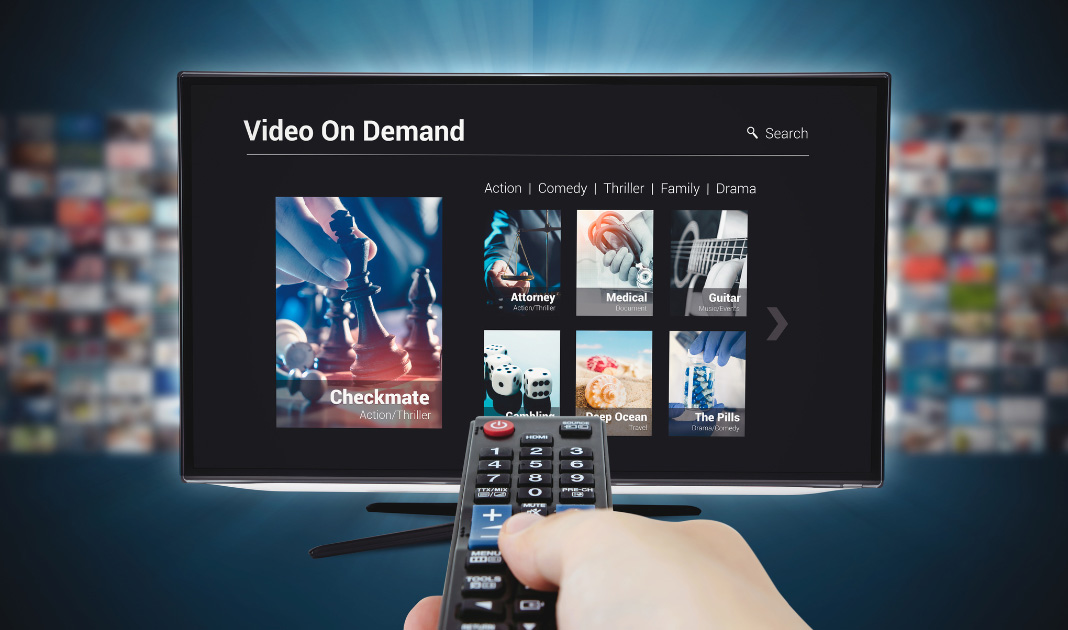In the rapidly evolving landscape of digital advertising, Over-The-Top (OTT) devices have emerged as a powerful channel for reaching consumers. With the proliferation of streaming services and connected devices, advertisers are presented with unique opportunities to engage their target audience. In this article, we delve into the dynamics of consumer advertising on OTT devices, exploring key factors that influence user behavior and strategies for optimizing ad effectiveness.
The Rise of Over-The-Top (OTT) Devices
Over-The-Top devices, commonly known as OTT devices, have become integral to the modern media consumption experience. These devices deliver content over the internet, bypassing traditional cable or satellite subscriptions. Examples include smart TVs, streaming sticks, gaming consoles, and dedicated streaming devices like Roku or Amazon Fire TV.
The surge in OTT device usage is a testament to the changing preferences of consumers who seek on-demand, personalized content. As a result, advertisers are adapting their strategies to align with this shift and leverage the immense potential of advertising on OTT platforms.
Consumer Behavior on OTT Devices
Understanding consumer behavior is essential for creating effective advertising strategies on OTT devices. Here are key insights into how users interact with content on these platforms:
On-Demand Content Consumption
One of the primary attractions of OTT platforms is the ability to access content on demand. Users appreciate the flexibility to watch what they want, when they want. Advertisers can capitalize on this by creating targeted, relevant ads that align with the user’s interests.
Multi-Device Connectivity
Consumers often use multiple devices simultaneously, creating a seamless, interconnected media experience. Advertisers must consider cross-device campaigns that maintain consistency and relevance across different screens to enhance the overall impact of their messages.
Ad Avoidance Challenges
OTT users are increasingly savvy in avoiding traditional advertising. Many platforms offer ad-free subscription options, and users may employ ad-blocking tools. Advertisers must create compelling, non-intrusive content to overcome these challenges and capture the audience’s attention effectively.
Factors Influencing Consumer Receptivity

Several factors play a crucial role in determining how consumers respond to advertising on OTT devices. Recognizing these influences is paramount for devising successful marketing strategies in this space.
Relevance and Personalization
Consumers are more receptive to advertisements that align with their interests and preferences. Leveraging data analytics and user insights, advertisers can create personalized campaigns that resonate with the target audience, increasing the likelihood of engagement.
Ad Format and Creativity
The format and creativity of ads significantly impact consumer receptivity. Interactive and immersive ad formats tend to perform better than traditional, static commercials. Advertisers should explore innovative formats, such as shoppable ads or interactive overlays, to enhance user engagement.
Timing and Frequency
Effective timing and frequency are critical in avoiding audience fatigue and annoyance. Advertisers must strike a balance between exposure and intrusion, ensuring that their messages reach consumers at optimal intervals without causing irritation.
Seamless Integration with Content
Ads that seamlessly integrate with the overall viewing experience are more likely to be well-received. Native advertising and product placements within relevant content contribute to a more cohesive and less disruptive user experience.
Strategies for Optimizing Ad Effectiveness on OTT Devices
Armed with insights into consumer behavior and factors influencing receptivity, advertisers can implement strategies to maximize the effectiveness of their campaigns on OTT devices.
Data-Driven Targeting
Harnessing the power of data analytics is crucial for successful OTT advertising. Advertisers should leverage user data to understand preferences, behavior patterns, and demographics, enabling them to tailor advertisements for specific target audiences.
Creative Innovation
Embracing creative innovation is key to capturing audience attention. Advertisers should experiment with interactive formats, 360-degree videos, and other immersive experiences to make their content stand out in the crowded OTT landscape.
Collaboration with Content Creators
Partnering with content creators and influencers within the OTT space can provide a powerful avenue for advertisers. Influencers often have a dedicated and engaged following, and their endorsement can lend authenticity to brand messages.
A/B Testing and Optimization
Continuous testing and optimization are essential for refining advertising strategies. A/B testing different ad creatives, formats, and targeting parameters allows advertisers to identify what resonates best with their audience, enabling data-driven refinement for better performance.
Cross-Channel Consistency
Maintaining consistency across multiple channels is crucial for brand recall. Advertisers should align their OTT campaigns with other marketing channels, ensuring a cohesive message that reinforces brand identity.
Future Trends in OTT Advertising

As technology continues to advance, the landscape of OTT advertising is poised for further evolution. Several trends are expected to shape the future of advertising on these platforms.
Advanced Targeting Technologies
Advancements in artificial intelligence (AI) and machine learning (ML) will empower advertisers to deploy more sophisticated targeting strategies. AI-driven algorithms will analyze user behavior in real-time, enabling precise targeting based on individual preferences and habits.
Immersive and Augmented Reality Experiences
The integration of immersive and augmented reality (AR) experiences within OTT advertising is on the horizon. This innovation will allow brands to create interactive and engaging campaigns that blur the lines between content and advertising.
E-commerce Integration
As the lines between entertainment and commerce continue to blur, e-commerce integration within OTT platforms is expected to rise. Shoppable ads and seamless purchase experiences directly within the streaming environment will provide new opportunities for advertisers to drive conversions.
Dynamic Ad Insertion
Dynamic ad insertion (DAI) is becoming more prevalent, allowing advertisers to serve personalized, contextually relevant ads to viewers. This technology ensures that the right ads are delivered to the right audience at the right time, enhancing overall campaign effectiveness.
Conclusion
In conclusion, understanding consumer receptivity to advertising on OTT devices is essential for advertisers looking to navigate the evolving digital landscape successfully. By considering factors such as relevance, creativity, and seamless integration, advertisers can optimize their campaigns for maximum impact. As technology continues to advance, embracing trends like advanced targeting, immersive experiences, and e-commerce integration will be crucial for staying ahead in the competitive world of OTT advertising. As advertisers continue to adapt and innovate, the future promises exciting possibilities for reaching and engaging audiences through Over-The-Top devices.
Have a project that you’re looking to field?
Logit can help. Just fill out the form below and a Logit Group team member will be in contact with you shortly. Get a quote today.





